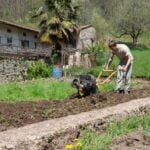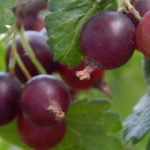How much do you have to water vegetable gardens? Proper watering is essential for the health and growth of your vegetable garden. In this article, we will explore the factors that influence the watering needs of vegetable gardens, including climate, soil type, and plant varieties.
We will also discuss the signs of underwatering and overwatering, as well as best practices for watering frequency and timing. Additionally, we will cover tools and techniques for efficient watering, the pros and cons of drip irrigation systems, water conservation tips, and adaptation strategies for dealing with drought or excessive rainfall.
Water is a critical component for the successful cultivation of vegetable gardens. The amount and frequency of watering can vary based on several factors such as climate, soil type, and the specific types of vegetables being grown. Understanding these factors is key to ensuring that your vegetable garden receives the right amount of water to thrive.
It’s important for gardeners to be able to recognize the signs of both underwatering and overwatering in their vegetable gardens in order to make necessary adjustments to their watering routines. By being mindful of these indicators, gardeners can avoid potential problems such as stunted growth or root rot caused by improper watering practices.
Factors to Consider
When it comes to watering vegetable gardens, there are several important factors to consider in order to ensure that the plants receive the right amount of moisture. One of the primary considerations is the climate in which the garden is located. In hotter and drier climates, vegetables will require more frequent watering compared to cooler and more humid climates. It’s crucial to take into account the seasonal changes as well, as watering needs can vary greatly throughout the year.
Another factor that significantly affects watering requirements is the type of soil in which the vegetables are planted. Sandy soils tend to drain water more quickly and may necessitate more frequent watering, while clay soils hold onto water for a longer period of time. Understanding your soil type will help you determine how often and how much water your vegetable garden needs.
Additionally, different varieties of vegetables have distinct water needs. Some vegetables are more drought-resistant, while others require consistently moist soil to thrive. It’s essential to research the specific watering needs of the vegetable varieties you are growing in order to provide them with adequate moisture for optimal growth and yield. By taking into consideration these factors – climate, soil type, and vegetable varieties – you can tailor your watering practices to meet the specific needs of your vegetable garden.
Signs of Underwatering and Overwatering in Vegetable Gardens
One of the most crucial aspects of maintaining a healthy vegetable garden is proper watering. Understanding the signs of underwatering and overwatering in vegetable gardens is essential for ensuring that your plants receive the right amount of moisture to thrive. Both underwatering and overwatering can have detrimental effects on the growth and yield of your vegetables, making it important to recognize these signs early on.
Underwatering in vegetable gardens can lead to stunted growth, wilting, yellowing leaves, and a reduced harvest. It is important to closely monitor the soil moisture levels, especially during hot and dry periods, to ensure that your plants are receiving an adequate amount of water. Additionally, certain vegetable varieties may show more obvious signs of underwatering than others, so it is important to be familiar with the specific needs of each plant in your garden.
On the other hand, overwatering in vegetable gardens can cause root rot, leaf discoloration, mold growth, and a lack of oxygen reaching the roots. It is crucial to avoid excessive watering and provide proper drainage to prevent waterlogged soil. Signs of overwatering may not be immediately noticeable but can become apparent over time as the health of your plants deteriorates.
By understanding and recognizing the signs of both underwatering and overwatering in vegetable gardens, you can take proactive measures to adjust your watering practices accordingly, ultimately leading to healthier and more productive crops.
Best Practices for Watering Vegetable Gardens
When it comes to watering vegetable gardens, frequency and timing are crucial aspects to consider in order to achieve optimal growth and yield. The general rule of thumb is to provide about 1 inch of water per week, either through rainfall or irrigation. However, this can vary depending on factors such as climate, soil type, and the specific varieties of vegetables being grown.
In terms of frequency, it is important to check the moisture levels in the soil regularly. This can be done by inserting a finger into the soil or using a moisture meter. If the top few inches of soil are dry, it’s time to water. It is generally better to water deeply and less frequently than to water lightly every day, as deep watering encourages deeper root growth.
The timing of watering is also crucial for vegetable gardens. It is best to water early in the morning, as this allows the leaves of the plants to dry off during the day, reducing the risk of disease. It also ensures that the plants have access to water during the hottest part of the day. Watering in the evening should be avoided as it can lead to prolonged leaf wetness and an increased risk of fungal diseases.
| Aspect | Consideration |
|---|---|
| Frequency | About 1 inch per week, varying with climate and soil type |
| Timing | Water early in the morning for optimal absorption and reduced risk of disease |
| Moisture Checking | Regularly check soil moisture levels before watering |
Tools and Techniques for Efficient Watering
When it comes to maintaining a vegetable garden, efficient watering techniques are essential for the health and growth of your plants. By using the right tools and techniques, you can ensure that your vegetables receive the proper amount of moisture without wasting water. Here are some tools and techniques for efficient watering in your vegetable garden:
- Hand Watering: Hand watering is a simple and effective method for watering small vegetable gardens. Using a watering can or hose with a spray attachment, you can target the base of each plant to deliver water directly to the roots.
- Soaker Hoses: Soaker hoses are a great option for larger vegetable gardens. These hoses are designed to release water slowly and evenly along their length, allowing for deep penetration into the soil without creating runoff.
- Watering Wands: For delicate or hard-to-reach plants, watering wands can be a useful tool. These long-handled wands allow you to gently water plants without disturbing their foliage.
In addition to using the right tools, adopting smart watering techniques can help maximize efficiency in your vegetable garden:
- Water In The Morning: It’s best to water your vegetable garden in the morning when temperatures are cooler, and there’s less risk of evaporation. This allows plants to absorb moisture before the heat of the day sets in.
- Water at Soil Level: To avoid wetting the foliage which can lead to disease, aim to water at soil level whenever possible. This helps direct moisture directly to the roots where it is needed most.
- Mulching: Applying a layer of mulch around your plants can help retain soil moisture by reducing evaporation. Mulch also helps regulate soil temperature and suppress weeds.
By incorporating these tools and techniques into your gardening routine, you can ensure that your vegetable garden receives optimal hydration while minimizing water waste.
Drip Irrigation Systems
Pros of Drip Irrigation Systems
Drip irrigation systems offer several advantages for vegetable gardens. One of the main benefits is water conservation, as these systems deliver water directly to the roots of plants, minimizing evaporation and runoff. This targeted approach also helps prevent weed growth, as the soil surface remains dry. Additionally, drip irrigation can be automated, allowing for precise control over the amount and timing of watering, which can be especially beneficial during hot and dry spells.
Cons of Drip Irrigation Systems
While drip irrigation systems have many advantages, there are also some potential drawbacks to consider. For instance, these systems can be initially more expensive to install compared to traditional watering methods. They also require regular maintenance to ensure proper functioning, including checking for clogs and leaks in the tubing. In addition, certain vegetable varieties may not respond well to drip irrigation, as some plants may prefer overhead watering or higher moisture levels in the surrounding soil.
Choosing the Right Drip Irrigation System
When considering a drip irrigation system for a vegetable garden, it’s crucial to select the right type for your specific needs. There are different options available, such as soaker hoses, emitter tubing, and micro-sprinklers.
Factors to consider when choosing a system include the size and layout of your garden, the types of vegetables being grown, and your local climate conditions. It’s also important to factor in any existing infrastructure or landscaping features that may impact how you install and configure the system.
Water Conservation Tips for Vegetable Gardeners
Choose Drought-Tolerant Plant Varieties
One effective way to conserve water in your vegetable garden is to choose plant varieties that are more resilient to drought conditions. Look for vegetable varieties labeled as “drought-tolerant” or “heat-resistant” when selecting seeds or seedlings for your garden. These plants have been specifically bred to require less water, making them ideal choices for water-conscious gardeners.
Implement Mulching Techniques
Mulching is an excellent method for conserving moisture in the soil and reducing the frequency of watering. By applying a layer of organic mulch, such as straw, leaves, or wood chips, around your vegetable plants, you can help retain soil moisture by reducing evaporation and weed growth. In addition to conserving water, mulch also provides other benefits such as regulating soil temperature and improving soil structure.
Collect Rainwater for Irrigation
Instead of relying solely on tap water for your vegetable garden, consider setting up a rain barrel or collection system to harvest rainwater. This effectively reduces your reliance on treated water while providing a natural and eco-friendly source of irrigation for your plants. Installing a rainwater harvesting system allows you to take advantage of free water during rainy periods and store it for use during drier times, ultimately contributing to water conservation efforts.
By following these water conservation tips, you can not only minimize the environmental impact of your gardening practices but also save time and resources in maintaining a healthy and thriving vegetable garden.
Dealing With Drought and Excessive Rainfall
Vegetable gardens can be greatly affected by extreme weather conditions such as drought or excessive rainfall. During times of drought, it is essential to implement adaptation strategies to ensure the survival and productivity of your vegetable plants. One effective strategy is to use mulch to retain soil moisture and reduce evaporation. Organic mulches like straw, wood chips, or compost can help regulate soil temperature and prevent moisture loss, making them a valuable tool during dry periods.
In the face of excessive rainfall, proper drainage becomes crucial to prevent waterlogged soil and root rot in vegetable gardens. To address this issue, raised beds or mounded rows can improve drainage and protect plants from drowning. Additionally, ensuring that the garden has proper slopes and adding organic matter to the soil can enhance its drainage capacity.
Another adaptation strategy for both drought and excessive rainfall is selecting vegetable varieties that are resilient to these conditions. Drought-tolerant vegetables such as okra, peppers, and sweet potatoes can thrive with minimal water, while water-loving crops like rice or watercress are better suited for areas prone to heavy rainfall. By choosing appropriate plant varieties, gardeners can increase their chances of success despite challenging weather patterns.
Conclusion
In conclusion, proper watering is essential for the health and success of vegetable gardens. By understanding the factors that influence watering needs, signs of both underwatering and overwatering, and best practices for efficient watering, gardeners can achieve optimal growth and yield from their crops.
It is important to consider the climate, soil type, and types of vegetables being grown in order to determine how much water is needed. Additionally, using tools and techniques such as soaker hoses or drip irrigation systems can help ensure that water is being delivered directly to the roots where it is most needed. This not only conserves water but also reduces the risk of overwatering.
Furthermore, gardeners should be mindful of water conservation practices and adaptation strategies in times of drought or excessive rainfall. By implementing these strategies, vegetable gardeners can maintain healthy plants and maximize their harvest. Overall, by following these best practices for watering, gardeners can set themselves up for success and enjoy a bountiful harvest from their vegetable gardens.
Frequently Asked Questions
Should I Water Vegetable Garden Every Day?
Watering a vegetable garden every day may not be necessary and can actually lead to waterlogged soil and root rot for the plants. It’s important to consider the specific needs of each vegetable, the local climate, and the soil type before deciding on a watering schedule.
Generally, it’s best to water deeply but less frequently to encourage deep root growth.
How Long Should I Run My Sprinklers on My Vegetable Garden?
When running sprinklers on a vegetable garden, the duration will depend on factors such as the type of vegetables, local weather conditions, and soil moisture levels. In general, it’s recommended to water in the morning to reduce evaporation during hot daytime temperatures.
A good rule of thumb is to ensure that the soil is moistened to a depth of at least 6 inches.
Am I Watering My Vegetables Too Much?
Overwatering vegetables can lead to a host of problems including root rot, fungus, and reduced nutrient uptake by plants. Signs of overwatering can include wilting despite moist soil, yellowing leaves, or a foul odor emanating from the garden bed. It’s important to monitor the soil moisture levels regularly and adjust watering practices accordingly.

If you’re looking to get into vegetable gardening, or are just looking for some tips on how to make your current garden better, then you’ve come to the right place! My name is Ethel and I have been gardening for years. In this blog, I’m going to share with you some of my best tips on how to create a successful vegetable garden.





